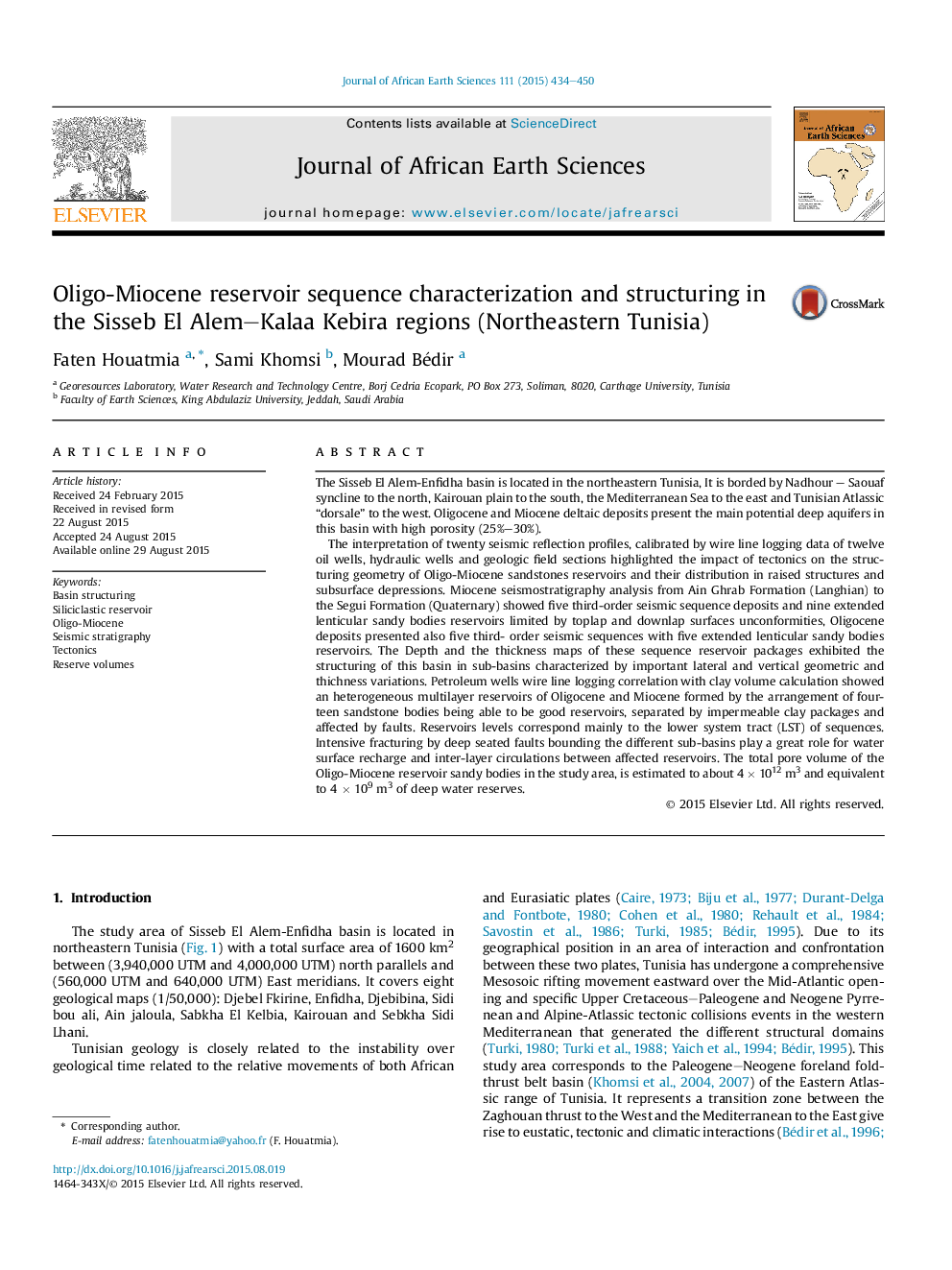| کد مقاله | کد نشریه | سال انتشار | مقاله انگلیسی | نسخه تمام متن |
|---|---|---|---|---|
| 4728515 | 1640196 | 2015 | 17 صفحه PDF | دانلود رایگان |

The Sisseb El Alem-Enfidha basin is located in the northeastern Tunisia, It is borded by Nadhour – Saouaf syncline to the north, Kairouan plain to the south, the Mediterranean Sea to the east and Tunisian Atlassic “dorsale” to the west. Oligocene and Miocene deltaic deposits present the main potential deep aquifers in this basin with high porosity (25%–30%).The interpretation of twenty seismic reflection profiles, calibrated by wire line logging data of twelve oil wells, hydraulic wells and geologic field sections highlighted the impact of tectonics on the structuring geometry of Oligo-Miocene sandstones reservoirs and their distribution in raised structures and subsurface depressions. Miocene seismostratigraphy analysis from Ain Ghrab Formation (Langhian) to the Segui Formation (Quaternary) showed five third-order seismic sequence deposits and nine extended lenticular sandy bodies reservoirs limited by toplap and downlap surfaces unconformities, Oligocene deposits presented also five third- order seismic sequences with five extended lenticular sandy bodies reservoirs. The Depth and the thickness maps of these sequence reservoir packages exhibited the structuring of this basin in sub-basins characterized by important lateral and vertical geometric and thichness variations. Petroleum wells wire line logging correlation with clay volume calculation showed an heterogeneous multilayer reservoirs of Oligocene and Miocene formed by the arrangement of fourteen sandstone bodies being able to be good reservoirs, separated by impermeable clay packages and affected by faults. Reservoirs levels correspond mainly to the lower system tract (LST) of sequences. Intensive fracturing by deep seated faults bounding the different sub-basins play a great role for water surface recharge and inter-layer circulations between affected reservoirs. The total pore volume of the Oligo-Miocene reservoir sandy bodies in the study area, is estimated to about 4 × 1012 m3 and equivalent to 4 × 109 m3 of deep water reserves.
Journal: Journal of African Earth Sciences - Volume 111, November 2015, Pages 434–450